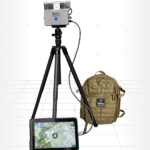
2020 House Race. Former Green Beret and DoD official Andrew Knaggs said Monday that he would run as a Republican to depose Rep. Abigail Spanberger (D-Va.) in the 2020 elections. Spanberger, a former CIA official, was elected to office in the 2018 midterms. Knaggs most recently served in the Pentagon as the deputy assistance secretary of defense for special operations and combating terrorism, but has held several posts in the department, including the chief of the research and engineering division…













